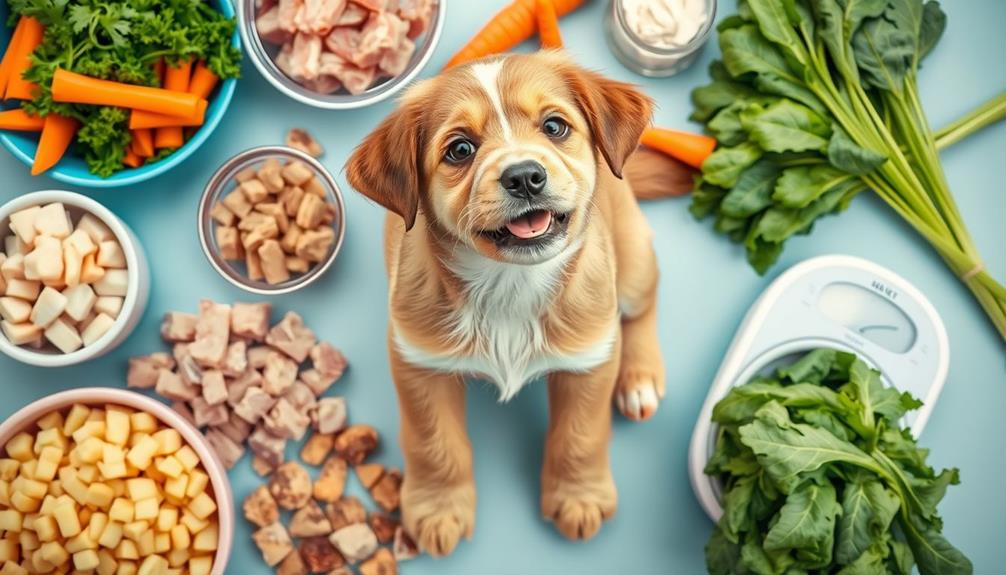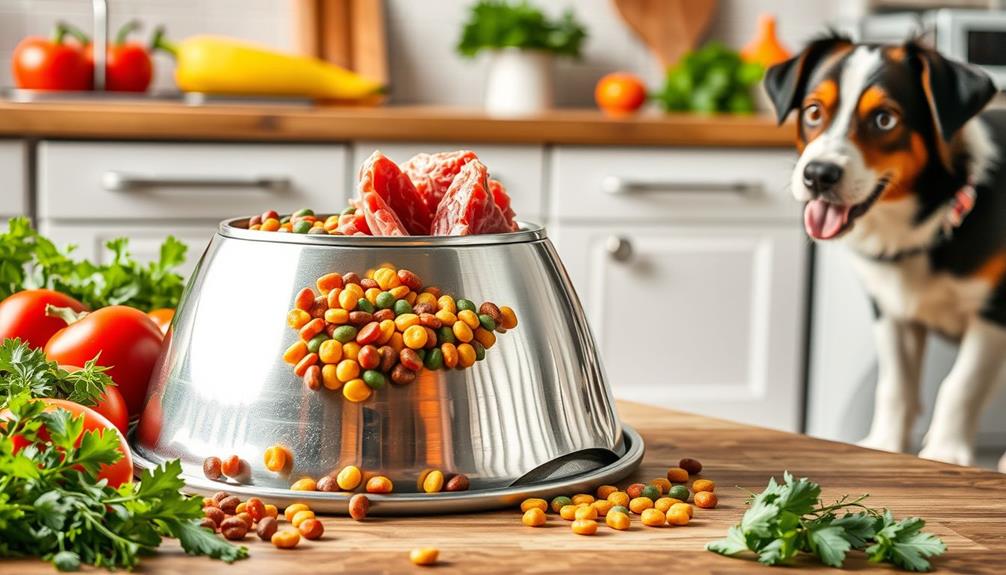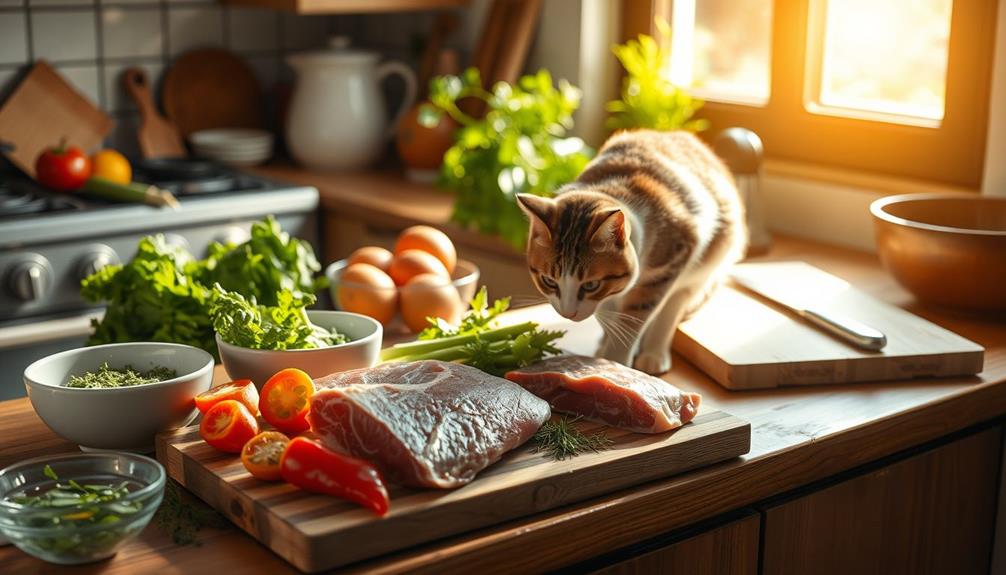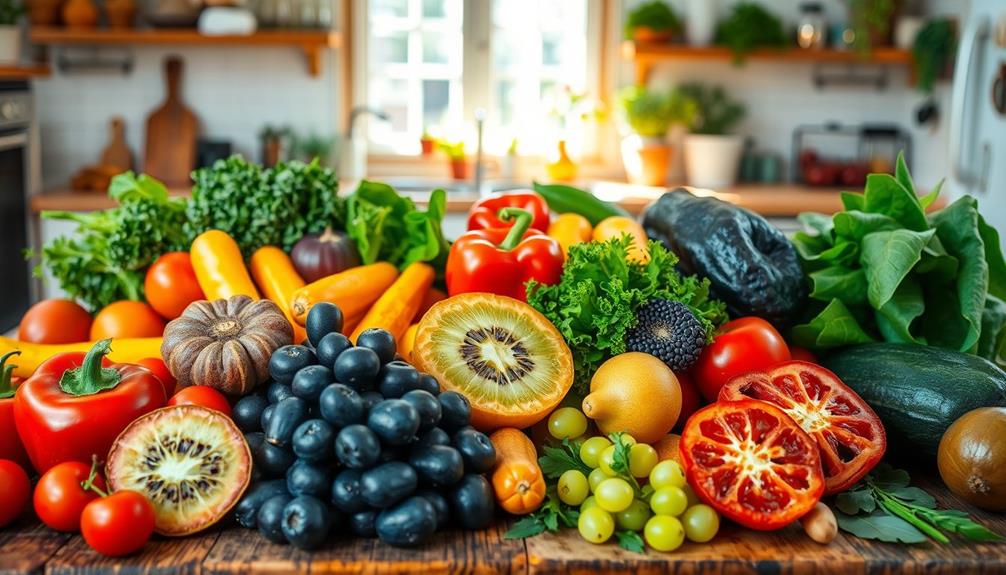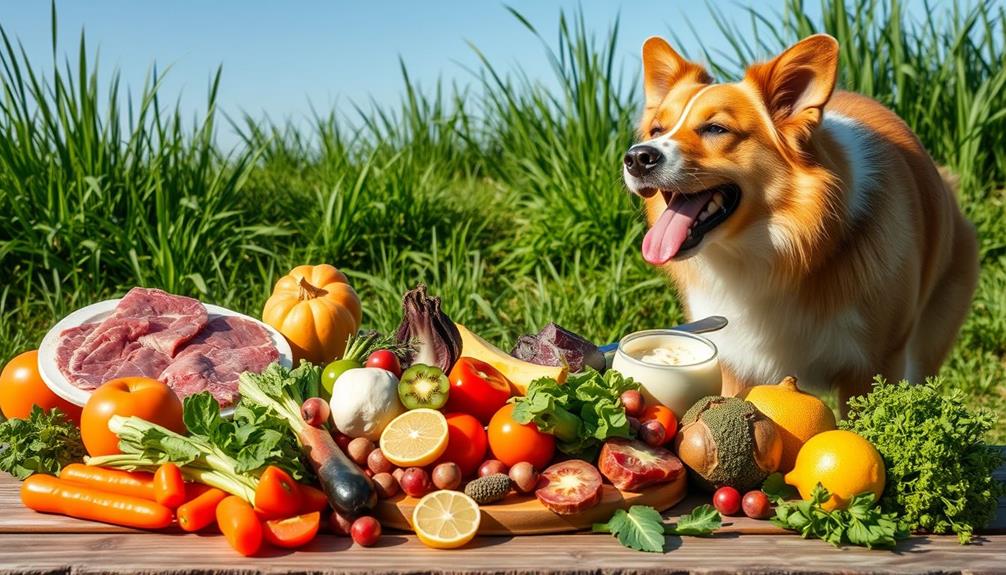When you're feeding your puppy raw food, aim for about 5% to 10% of their body weight each day. For an 8-week-old pup, you might be closer to 10%, while a 6-month-old will likely need around 5%. It's important to monitor their weight weekly and adjust their portions as they grow. Puppies typically eat four meals a day until 16 weeks, then three meals until a year old. Make sure the food is high-quality, rich in proteins, fats, and vitamins. Stick around, and you'll uncover tips on the best practices for maintaining your puppy's health.
Key Takeaways
- Puppies typically require 5-10% of their body weight in raw food daily, adjusting as they grow.
- An 8-week-old puppy needs about 10% of body weight, while a 6-month-old may need around 4%.
- Monitor your puppy's weight weekly to adjust food portions according to growth and activity levels.
- Feed puppies aged 8 to 16 weeks 4 meals per day, reducing to 3 meals from 16 weeks to 12 months.
- Choose high-quality raw food with balanced nutrients and the right calcium to phosphorus ratio for optimal growth.
Understanding Puppy Nutritional Needs
When it comes to understanding puppy nutritional needs, it's important to remember that these little bundles of energy grow rapidly and require a specific balance of nutrients. Proper nutrition is essential for overall health and development, similar to how financial considerations for elderly care play a significant role in guaranteeing well-being later in life.
You should aim to feed your puppy around 4% to 10% of their body weight in food daily, depending on their age. For instance, an 8-week-old puppy might need about 10% of their body weight, while a 6-month-old may only require 4%.
By closely monitoring your puppy's weight weekly, you can adjust their feeding amounts to make sure they receive the best nutrition for healthy growth. A balanced diet for your puppy should include high-quality proteins, fats, carbohydrates, vitamins, and minerals. This variety supports their overall development and keeps them energetic and happy.
Don't overlook the importance of calcium and phosphorus ratios, as these minerals are critical for strong bone growth. Careful meal planning is necessary to meet these nutritional guidelines effectively.
Calculating Raw Food Portions

Calculating the right raw food portions for your puppy is vital to guaranteeing they receive the nutrition they need for healthy growth. Puppies typically require about 5-10% of their current body weight in raw food daily. Younger puppies need a higher percentage compared to older ones. For instance, a 3 kg puppy should be fed approximately 150 grams per day, calculated as follows:
| Body Weight (kg) | Daily Raw Food (grams) |
|---|---|
| 3 | 150 |
| 5 | 250 |
| 10 | 500 |
As your puppy grows, adjust the feeding amount; by 6 months, their requirement usually decreases to about 5% of body weight. It's vital to monitor your puppy's weight weekly to guarantee accurate feeding amounts. This way, you can make necessary adjustments based on their growth and activity levels. Using a puppy food calculator can also help determine the appropriate daily feed volume tailored to your puppy's weight and age, guaranteeing they receive the right nutrition during their developmental stages.
Feeding Frequency for Puppies

Feeding frequency plays a significant role in your puppy's growth and development. For puppies aged 8 to 16 weeks, it's crucial to feed your puppy 4 meals per day. This high frequency meets their energy and growth needs as they rapidly develop.
Additionally, guaranteeing a proper diet that includes a variety of nutrients is important for their health; consider the significance of proper diet for pets in planning their meals. As your puppy reaches 16 weeks to 12 months, you can reduce the feeding frequency to 3 meals per day, as their growth rate starts to slow down.
Once your puppy is between 12 to 18 months old, it's recommended to shift to 2 meals per day. This change helps maintain a balanced diet as your puppy matures into an adult dog.
Keep in mind that younger puppies may need to consume about 10% of their body weight in food daily, while this requirement reduces to around 4% by 6 months of age.
To guarantee your puppy is growing appropriately, make sure to conduct weekly weight checks. This practice allows you to adjust meal portions based on their age and activity level, helping you provide the right nourishment at every stage of their development.
Benefits of a Raw Diet
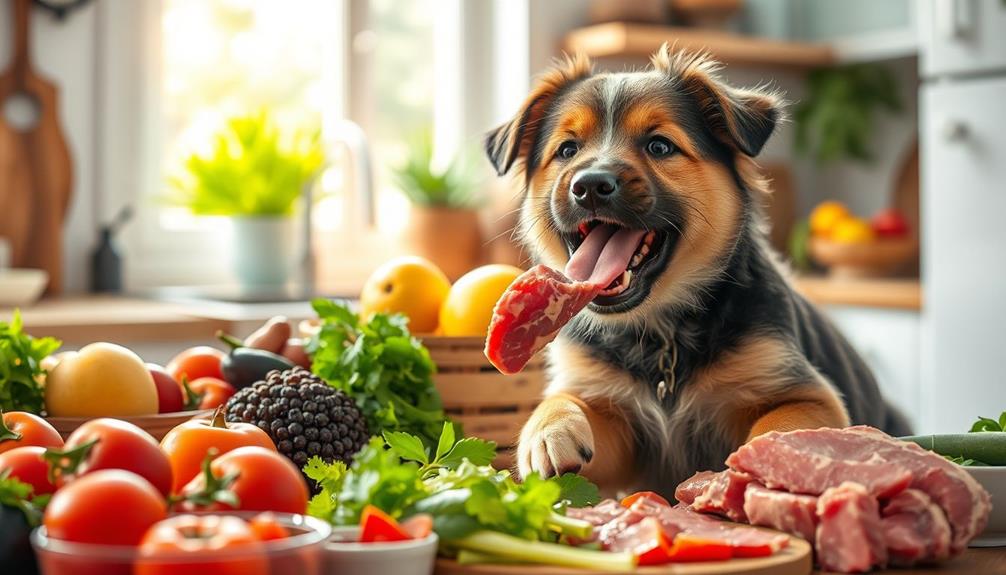
Many puppy owners are discovering the significant benefits of a raw diet, which can enhance your puppy's overall health and energy. One of the key benefits of raw is improved nutrient absorption, leading to shinier coats and better overall vigor.
Puppies fed a raw diet often experience fewer allergies, which helps them maintain healthier skin and coat conditions. Incorporating natural ingredients in their diet can also promote overall wellness, as seen with healthy dog snacks that provide essential nutrients.
You might also notice an increase in energy levels as your puppy thrives on the natural nutrients found in raw food. This increase in vitality supports their active growth and development, ensuring they become healthy adults.
Additionally, a raw diet contributes to enhanced digestive efficiency. You'll likely see smaller, firmer waste, indicating your puppy's body is effectively utilizing the nutrients.
Better dental health is another perk, as the natural chewing action required for raw meat and bones helps reduce plaque buildup, keeping their teeth cleaner.
Incorporating a raw diet can lead to a happier, healthier puppy overall, making this feeding choice a worthwhile consideration for pet owners wanting the best for their furry companions.
Choosing Quality Raw Food
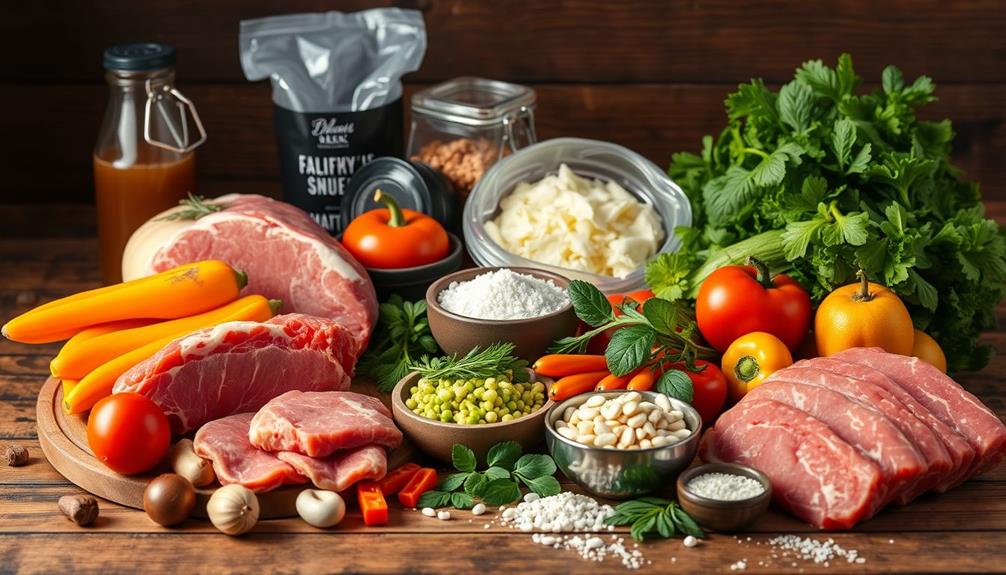
Choosing the right raw food for your puppy can greatly impact their growth and health. When selecting a balanced raw puppy food, prioritize high-quality, fresh ingredients that promote easier digestion and ideal nutrient absorption.
It's important to take into account the benefits of essential oils for overall wellness, as essential oils for respiratory health can support your puppy's immune system alongside a nutritious diet. This is essential for developing puppies who require a complete diet to support their rapid growth.
Make sure the food contains essential proteins, fats, vitamins, and minerals tailored to their specific needs. It's also important to check the calcium to phosphorus ratio; this balance is critical for healthy bone development and overall skeletal health.
Opt for commercially balanced raw food options from reputable brands that source their ingredients locally. This way, you can guarantee your puppy's food is free from antibiotics, hormones, and artificial additives, maximizing safety and quality.
Frequently Asked Questions
How Much Raw Food Should I Give My Puppy?
You should feed your puppy about 5-10% of their body weight in raw food daily. Younger pups might need closer to 10%, so adjust based on their growth and consult your vet for specifics.
How to Calculate How Much Raw Food to Feed a Dog?
Did you know that puppies should be fed about 5-10% of their body weight daily? To calculate their raw food needs, multiply their weight by the appropriate percentage, adjusting as they grow and become more active.
How Much to Feed a Puppy Calculator?
A puppy food calculator helps you determine the right amount to feed based on your pup's weight and age. Regularly input their data to adjust portions for ideal growth and health. You'll see progress!
How Much Do I Feed My Puppy Chart?
You'll find a feeding chart helpful for determining the right amount for your puppy. It considers age and weight, ensuring they get the nutrition they need. Always adjust based on their growth and activity levels.
Conclusion
So, you thought feeding your puppy raw food would be a piece of cake? Well, it's a bit more complex than tossing them a steak! By understanding their nutritional needs, calculating the right portions, and choosing quality ingredients, you're setting them up for a healthy future. Remember, it's not just about what you feed them, but how you feed them. Who knew puppy parenting could be this much fun? Get ready for some serious mealtime adventures!

